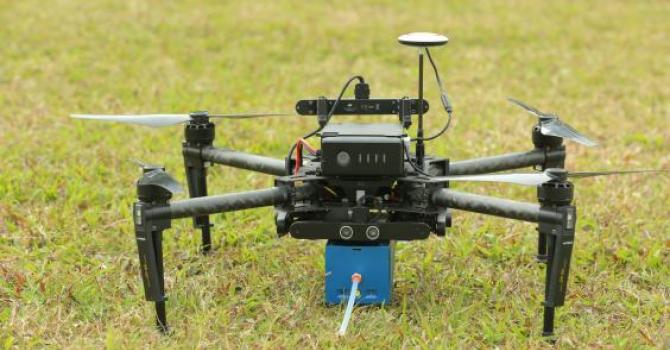CHINA DAILY: HZMB is a game changer for Bay Area connectivity
Christine Loh points out that arguments occurred over every huge project since the MTR, yet all the projects have proved good for Hong Kong; the bridge will be no exception
Connecting transport infrastructure is the precondition to mobility systems. Connecting communities promotes all kinds of socio-economic human activities.
This is what has been happening gradually between Hong Kong and its immediate neighborhood. Now that the high-speed rail linking Hong Kong and Guangzhou is in service and the bridge linking Hong Kong, Macao and Zhuhai is opening on Wednesday, people have more choices to move around the Guangdong-Hong Kong-Macao Bay Area and beyond.
These major infrastructure projects are technically extremely challenging and are engineering marvels. However, they take a long time from conception to completion, and are horrendously expensive. Not everyone can build, afford or manage such projects well.
Hong Kong is fortunate to have a long track record of building amazing infrastructure — such as the mass transit system and airport at Chek Lap Kok, the Harbour Area Treatment Scheme that handles sewage, and the zero effluent discharge T•PARK in Tuen Mun that turns sewage sludge into energy, just to name a few. Each one of them faced similar disputes at the inception stage and took many years to construct.
There were arguments in the 1970s about whether Hong Kong really needed a mass transit system since more roads would do. Once the first line was opened in 1979, it was hard to imagine it not being there. Hong Kong people have not looked back since and the city has continued to expand the system greatly. Indeed, everyone now wants it extended to their district.
There were furious debates in the 1980s about whether a new airport was really needed and where to locate it and getting it built. At the same time there were questions over how to design a much-needed harbor sewage treatment scheme, where to site it, the choice of technology and the level of treatment — the arguments started prior to 1997 and were only settled after reunification. The scheme was finally commissioned in 2015. Where to site the sludge treatment plant was yet another matter of political contention.
During the construction stage of all these projects, there were many squabbles over whether they were meeting timelines and budgets. Slippage and mismanagement here and there created legitimate questions. The commissioning stage of these projects faced many technical and management challenges because they were complicated projects. For example, many people remember the embarrassing teething problems when the airport opened in 1998. However, when these giant projects became operational and with teething problems resolved, they quickly became part of the essential infrastructure of Hong Kong — things people feel proud of. Their positive economic impact was immediate and we now can hardly contemplate things without them.
Likewise, Hong Kong argued over whether it needed a bridge to connect Hong Kong to the western part of the Pearl River Delta, as well as the routing of the high-speed rail. When these projects were first conceived some decades ago, it was hard to foresee the rapid pace of development on the mainland. Negativity to these projects was also raised from time to time as a result of delays, mismanagement here and there, legal disputes and large cost overruns.
There are still concerns expressed about whether these are “white elephants” because it is unclear at this early stage what will be their eventual level of usage. This is a function of not only price but also how people on both sides of the boundary perceive their convenience.
The bridge is estimated to shorten trips from Zhuhai to Hong Kong’s airport from four hours to 45 minutes, while journeys between Zhuhai and Hong Kong’s container terminals in Kwai Chung — the heart of Kowloon — will drop from about 3.5 hours to around an hour and 15 minutes.
In other words, Hong Kong drivers too, whether commercial or personal, can drive to Zhuhai quite quickly and then continue on to many other places on the mainland. The bridge will gradually change how people see options to move around a much bigger area of the country for work or pleasure. This will be a new experience for people in Hong Kong, who had lived in a small, confined place.
Hong Kong people have expressed worry about the number of mainland vehicles coming across the bridge because that could add to local congestion, and even worsen air quality although only vehicles that meet local emissions standards would get cross-boundary licences. In other words, not any old vehicle can drive over to Hong Kong from the mainland.
As for the management and convenience of cross-boundary immigration and other services, adjustments will have to be made about many aspects of coordination between Hong Kong, Macao and the mainland. With the bridge physically there, the clock cannot be wound back and everyone needs to look forward to iron out glitches.
The opening date of services of the bridge on Wednesday, Oct 24 surprised people in Hong Kong because they had expected a longer lead time than five days to get bus and coach services organized, as well as other logistics. The service providers are now working like the clappers and some services are expected to be operational on time and more will come on very soon. Transport officials in Hong Kong, Macao and Zhuhai are also put under pressure.
Give it time and it will be possible to see more clearly how the cross-boundary infrastructure and services serve the people of the region better and even bring them closer together.
The article has appeared on China Daily https://www.chinadailyasia.com/articles/54/115/157/1540265687831.html?newsId=51489




